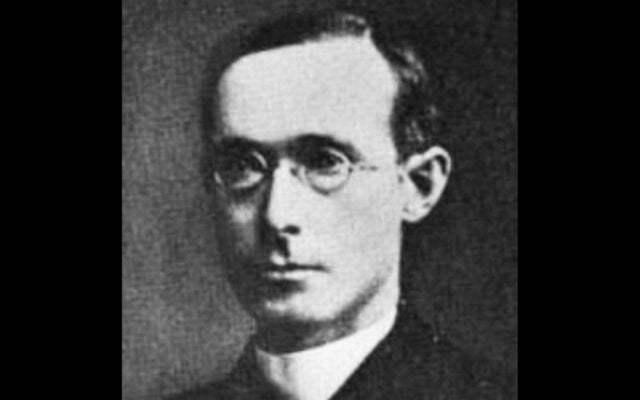Today I write of the Rev. Canon Joseph Guinan, not in his clerical capacity, but for his literary and cultural contributions. An accomplished author, his work has been officially declared culturally important with respect to human civilization.
Guinan was born to tenant farmers on February 19, 1864, at Cloghaun, Co Offaly. He attended St. Mel's College, Longford, and St. Patrick's College, Maynooth.
When ordained in 1888, Guinan was first posted at Liverpool, where he immersed himself in and wrote of the “Liverpool Irish."
Returning to Ireland in 1893, he joined St. Mel’s faculty while serving St. Mary’s Parish, Athlone. He moved on to Legan, Co. Longford, and then Wheery & Tisaran, Co Offaly, before spending a decade at Bornacoola, Co Leitrim. Guinan's appointment as Canon of Ardagh & Clonmacnoise came in 1920.
Not shy about his societal or political opinions, his nationalistic pride, disdain for landlordism and its impacts blared through his pen and public speeches. He laid blame for an Gorta Mór squarely at the feet of England ("The Famine Years", 1908).
Guinan celebrated patriotism in both past and current events, even unveiling a monument to the 1798 Rebellion at Ballinamuck in 1928.
His novels highlighted the land issue, landlordism, rebel actions, and the evolving role of local clergy in works such as “The Soggarth Aroon” (1905) and “The Island Parish" (1908).
Intertwined with Guinan's prose were veiled, often very thinly, messages relevant to present concerns. He perfectly captured the essence of life in untouched pockets of Ireland, as the nation moved toward the turn of the century.
In each novel, a Soggarth Aroon, or sagart a rún ('darling priest'), played a central role.
Guinan's tales were fiction, and he surely took some creative license. But he drew on a lifetime of living with and serving the people of such settings.
Perhaps, it is his association with Ardagh and Leitrim which make Guinan’s work so alluring to us - painting a portrait of the lives of our forebearers at one moment in Irish history.
Guinan passed on January 5, 1932 and rests at Ardagh Cemetery, where the inscription reads: “Erected by the people of Ardagh and Moydow to the beloved memory of their late Parish Priest. Very Rev. Joseph Canon Guinan P.P. V.F.. A zealous and kindly pastor. He lives in the affections of his flock. A distinguished writer in the graceful products of his pen. Died January 5th 1932 in the sixty-ninth year of his age and the forty-fourth of his priesthood. Whose memory is in Benediction. Requiescat in Pace. A.D. 1938”
Clearly, to the people of Ardagh, Guinan was their sagart a rún, and likely a great deal more.
*Learn more on TheCelticHistorian.ie.
This article was submitted to the IrishCentral contributors network by a member of the global Irish community. To become an IrishCentral contributor click here.




Comments